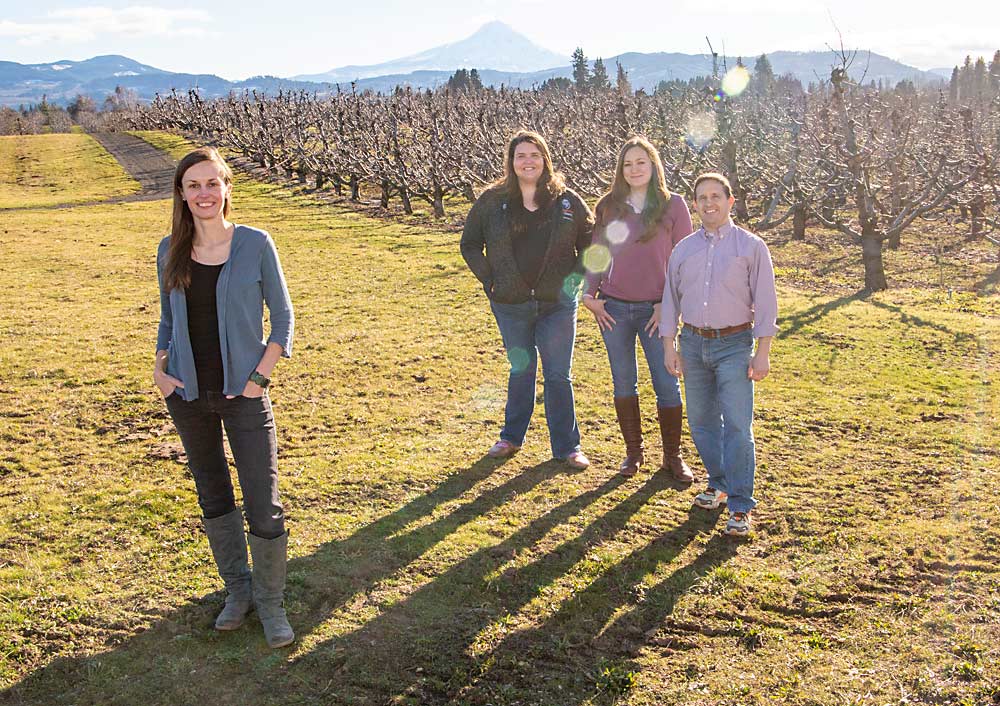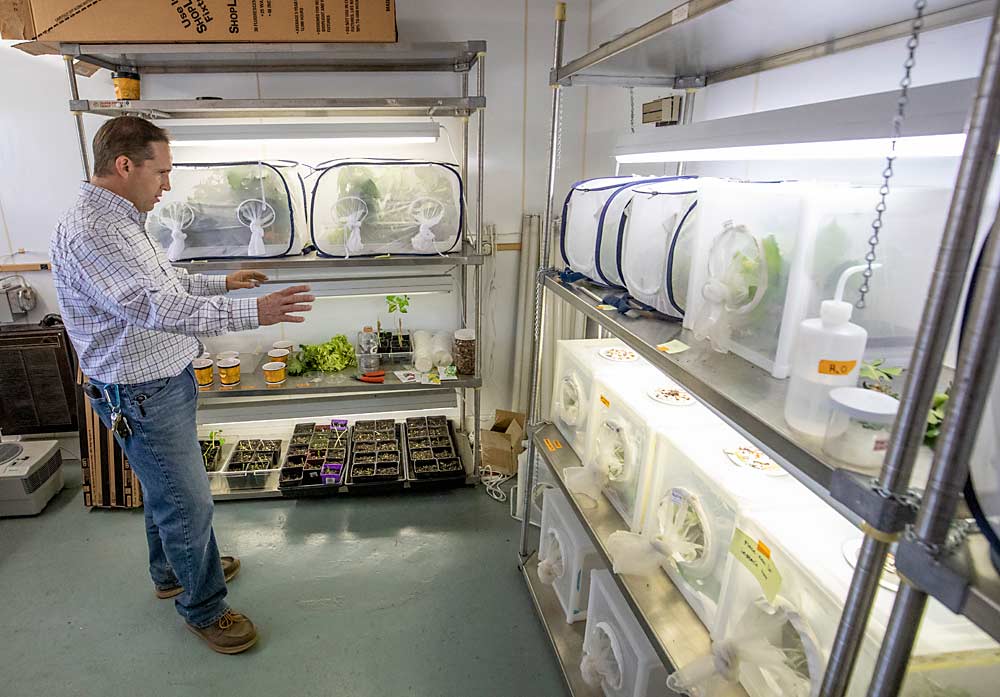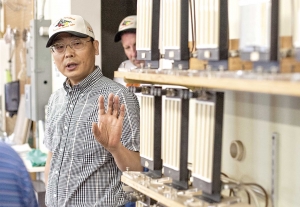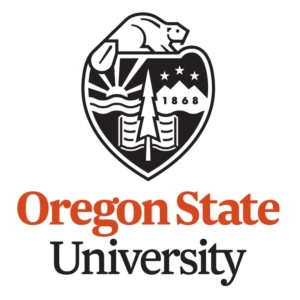
The Hood River, Oregon-based research team serving the tree fruit industry is back to full strength.
Now that Rachel Leisso has filled a U.S. Department of Agriculture position, the scientific presence for cherries and pears in Hood River is back to the same four-person level as it was six years ago, before a round of turnover.
“It’s been a long time coming and it will really help the future of the pear industry,” said Don Gibson, CEO of Mount Adams Fruit and a member of an industry committee that screens research projects for funding.
Leisso, a postharvest physiologist, arrived in 2021 and technically falls under the administration of the federal Agricultural Research Service group in Wenatchee, Washington. But she is setting up her laboratory in a leased building at Oregon State University’s Mid-Columbia Agricultural Research and Extension Center, or MCAREC, that used to house a research pear packing line.

Her three teammates all work directly for OSU:
—Ashley Thompson, tree fruit extension specialist, who started in 2018, keeps offices at MCAREC and nearby in The Dalles. Applied research and extension programs are her responsibilities.
—Chris Adams, entomologist, who started in 2019, is steering the center’s work on countering brown marmorated stink bug and spotted wing drosophila, and he also chairs a new Northwest-wide task force for the control of codling moth.
—Kelsey Galimba, horticulturist, who started in 2020, is studying alternative pear pollinizers, rootstocks, cold hardiness and other horticultural topics.
The four researchers don’t see much of a line between them, in spite of the two institutions and budgets.
“It’s important to the industry that we work together,” Thompson said.
Turnover came hard and fast at the station over the past six years.
In 2016, entomologist Peter Shearer resigned for a position at Washington State University, then moved to California Polytechnic State University in San Luis Obispo, while horticulturist Todd Einhorn moved to Michigan State University. In 2017, extension specialist Lynn Long retired, and postharvest specialist Yan Wang unexpectedly died. All were OSU researchers.
“It was a tough period,” said Mike Doke, executive director of Columbia Gorge Fruit Growers, a grower group that contributes about $175,000 per year toward research at MCAREC, some toward salaries, some toward specific projects. While the positions were unfilled, Columbia Gorge continued to send the money, which university administrators banked to help with start-up costs once they were filled. Columbia Gorge and the Oregon Sweet Cherry Commission both contributed to an upcoming renovation of an OSU laboratory at MCAREC.
It was important to the wider pear industry for Leisso to set up shop in Hood River.
Postharvest work is important to the whole pear industry, as it tries to strike a balance between making pears last throughout the shipping season and getting them to ripen in time to attract impatient shoppers. But pears grow and store differently in the Hood River Valley than the Wenatchee River Valley in Washington. For example, the Columbia Gorge has more brown marmorated stink bug and a higher incidence of Phacidiopycnis rot, said Gibson of Mount Adams.
“We have different problems, different climates,” he said.

Previously, the postharvest role was an OSU position, but administrators decided the budget just couldn’t afford to replace it and the other three spots.
Grower groups persuaded the federal government to help, which literally took an Act of Congress. The USDA’s Agricultural Research Service, or ARS, is funded annually by appropriations approved by the U.S. Congress. The Northwest Horticultural Council of Yakima, Washington, which represents fruit growers federally, worked with Sen. Jeff Merkley, an Oregon Democrat, to secure $1 million per year in funding for the ARS presence in Hood River, which includes Leisso’s salary, staff, equipment and other operations.
MCAREC still has work to do. Leisso needs to hire a postdoctoral scientist, and agricultural research is subject to the same labor shortages as the rest of the economy.
The center also needs a new director to replace Steve Castagnoli, who orchestrated much of the rebuilding but retired late last year. Stuart Reitz, the permanent director of OSU’s Malheur Experiment Station in Ontario, is serving as the interim director.
Reitz lauded the work by Castagnoli to rebuild the team and the researchers who started during the pandemic. “They came in at the absolute worst time,” he said.
Currently, the university plans to let Reitz direct a national search for a new permanent MCAREC director with input from the tree fruit industry.
—by Ross Courtney









Leave A Comment